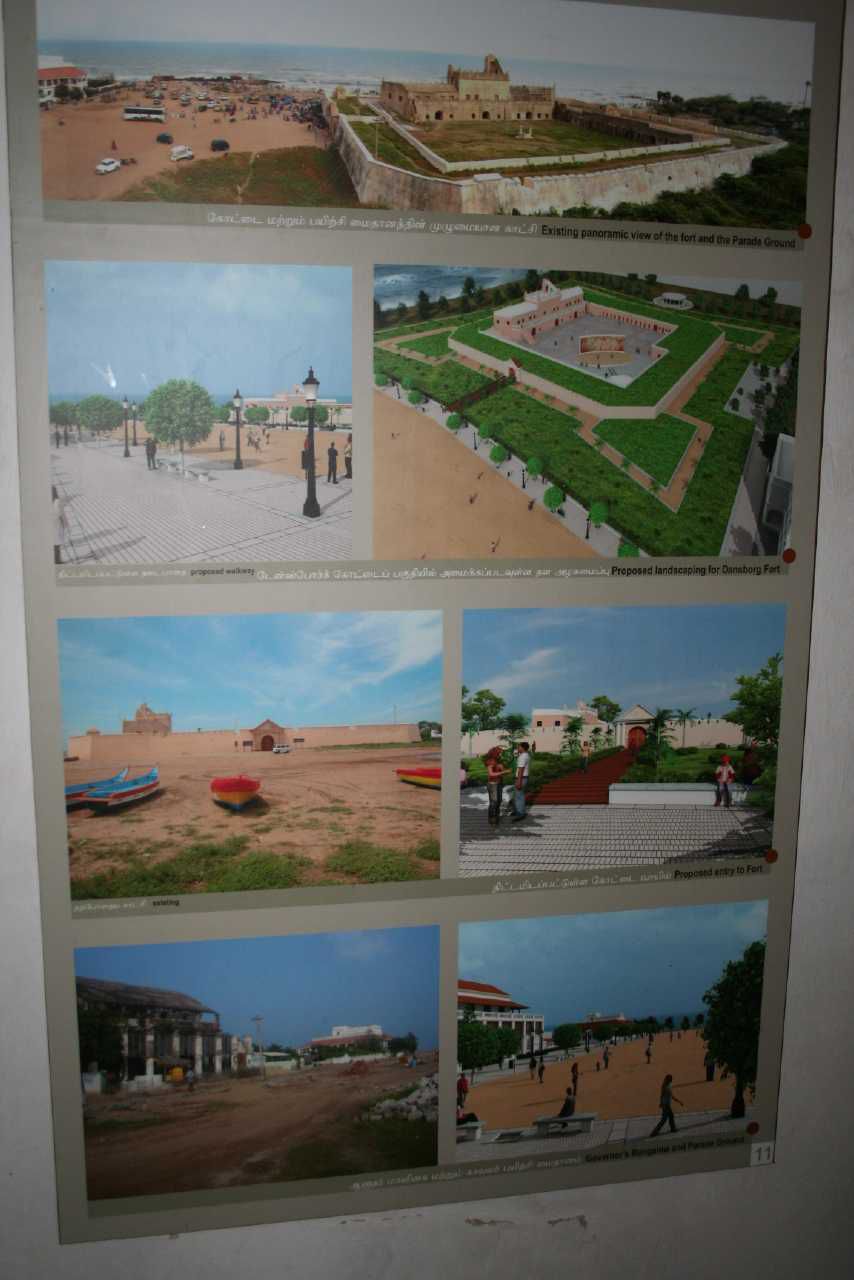
Fort Dansborg - a proposal for a development plan, 2013
The drawing shows a proposal for development of Museum Fort Dansborg with trees around the current structure in order to illustrate the original moat with a drawbridge, which Dansborg was provided with from 1620-1774. The plan is made of Tamil Nadu Chapter of INTACH (the Indian National Trust for Art and Cultural Heritage) and the proposal was presented the antiquarian authorities in Chennai, which is responsible for Dansborg declared for protected cultural heritage of India. Fort Dansborg has since 1977 functioned as a public museum. The Danish East Indian Trading Company built Fort Dansborg in 1620 with help and permission from King Raghunatha Nayak in Thanjavur. The purpose was to protect Danish and Indian merchants and civil servants and to store trading goods to be sold either on the Indian Ocean markets or taken onboard Danish ships to be sold in Europe. Outside the fort to the north was the Parade Ground used for military exercises and processions during receptions of royal Indian delegations.
In 1774 water from the surrounding moat had begun to undermine the foundations of the fort and the moat was filled up at in order to protect the structure. This left the fort with its present look.
A part of the covered moat was excavated in 2008 in a joint project by the Archeological Survey of India, Tamil Nadu State Department of Archeology and the Tranquebar Initiative of the National Museum of Denmark. The excavation revealed traces of the original bridge as well as several daily life objects such as clay pipes, Chinese porcelain, European wine bottles and Indian clay pots.
Tranquebar – or Tharangampadi – is a village on the Coromandel Coast of south India. A large part of the population in Tranquebar are fishers or working within business related to fishing. The language is Tamil and the majority of the inhabitants adhere to religious traditions of Hinduism, but there are also smaller communities relating to Christianity or Islam. During India’s colonial period, Tranquebar functioned as a Danish trade station from 1620-1845. The place has a rich intercultural history, documented in historical buildings and rich archival sources as well as old and new ethnographic collections of material items, photos and accounts of everyday life.